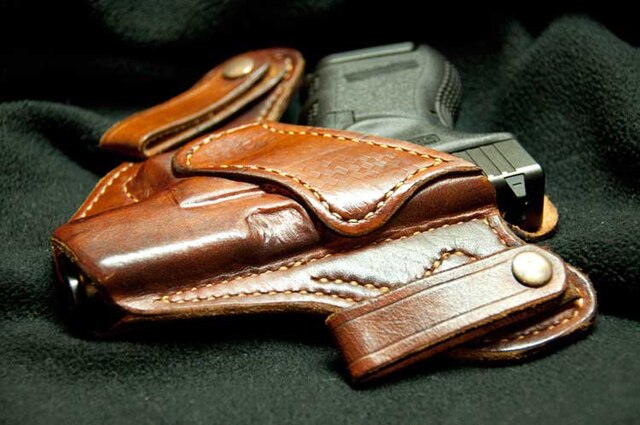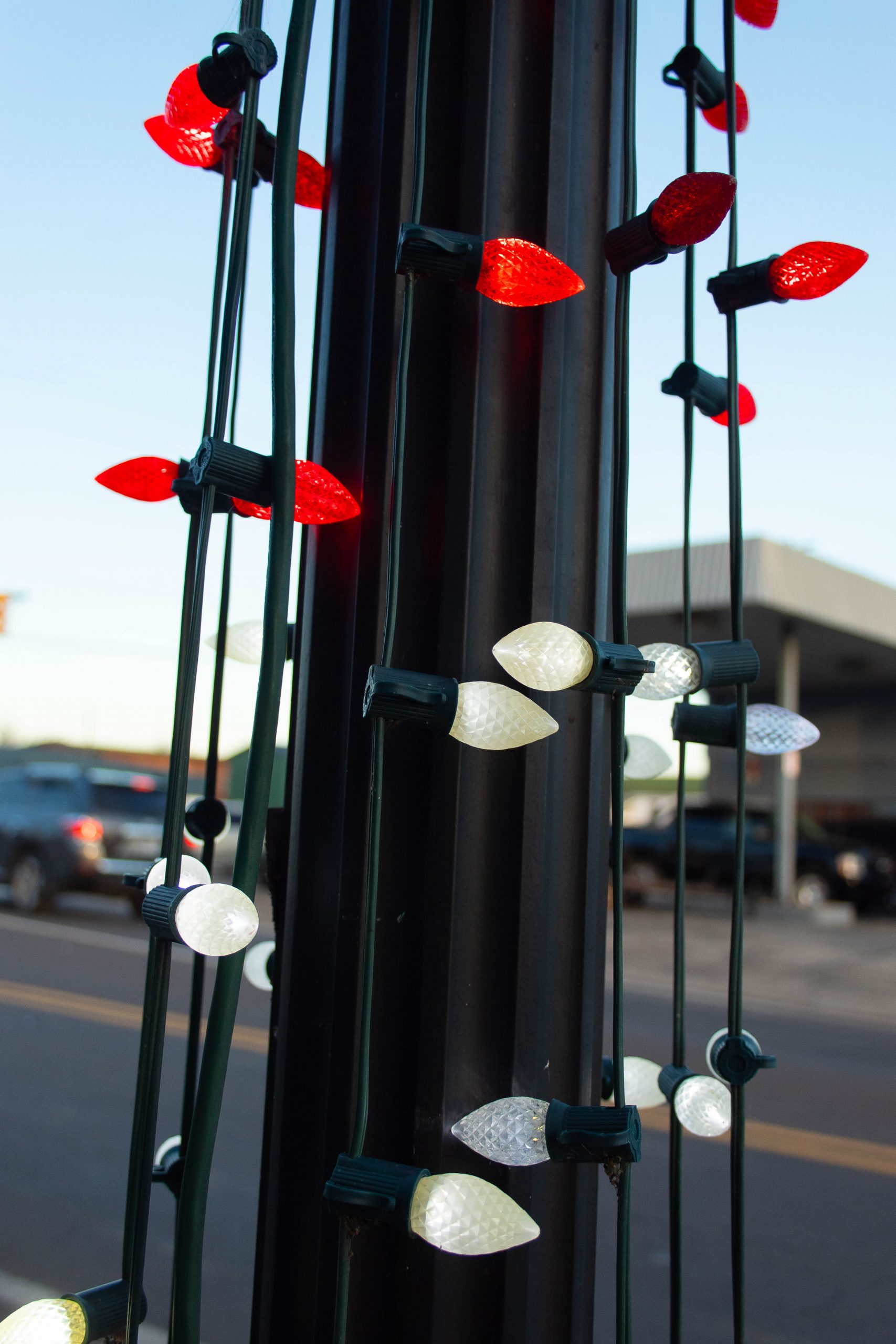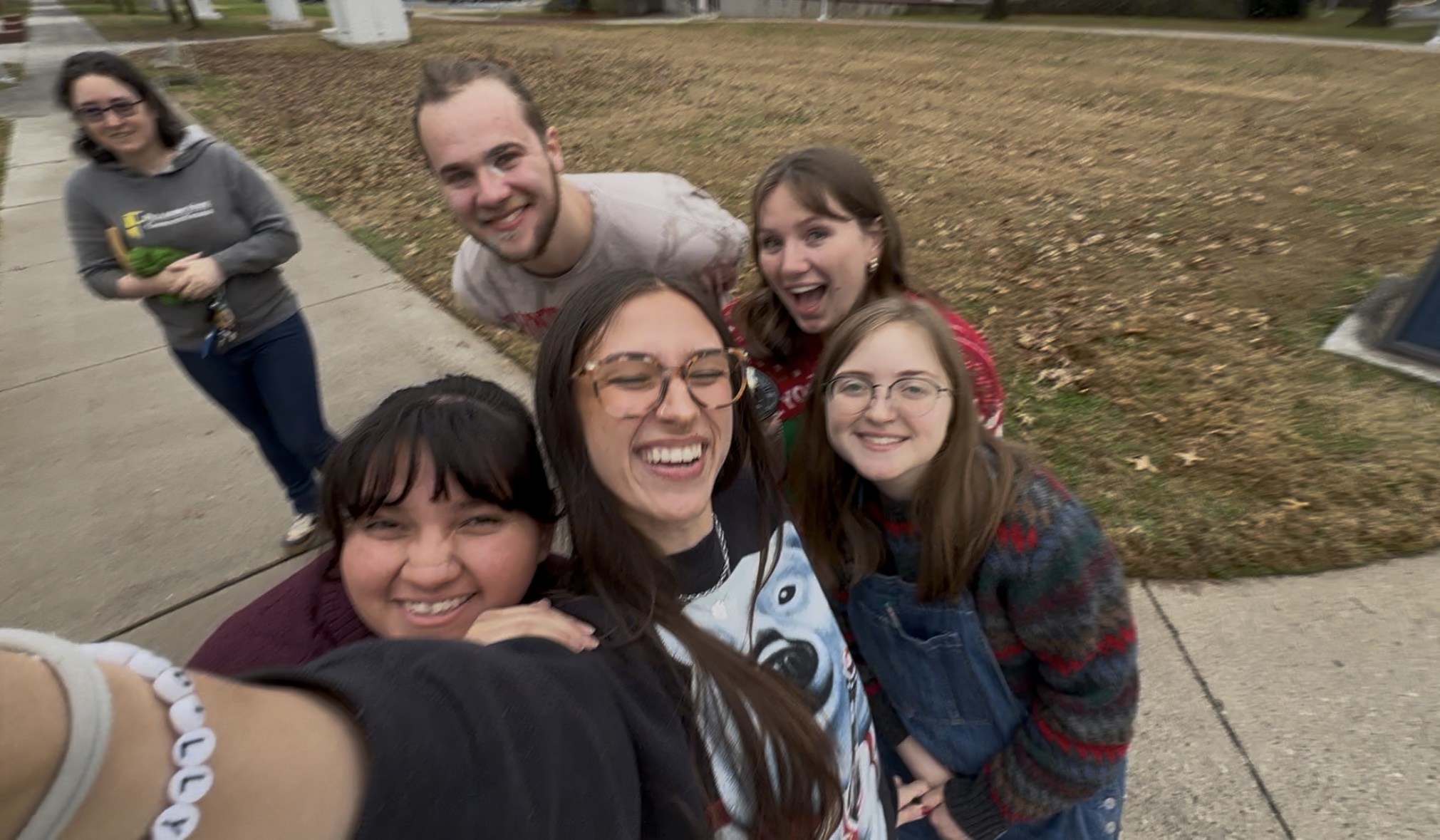By Editorial Staff, Transcribed and Introduced by Hollyn Rummel, Staff Writer

In response to the increase in school shootings in America, bills have been proposed in favor of allowing teachers to carry firearms in classrooms. These proposals are often made with the intention to offer a small form of protection to combat the vulnerable state of a classroom in certain perilous situations; however, many worry these measures may act as a self-fulfilling prophecy, creating a more dangerous learning environment.
While the safety of students remains the common goal, the public has become polarized on the answer to this debate. In regards to the Tennessee bill passed last year, allowing teachers and staff to carry concealed firearms in class, two Pellissippi State Community College’s students with opposing viewpoints have been invited to share their argument and discuss how firearms could have a powerful effect, for better or worse, on classroom safety.
PARTICIPANTS
Draven Copeland, Editor-in-Chief
Patrick Dobyns, Opinion Editor
William Dishmon, Photographer
John Medina, Photographer
Draven Copeland: What do you think the effects of guns in the classroom will be and how will it help and/or hinder the issue of gun violence?
Patrick Dobyns: Specifically when talking about teachers using guns or teachers possessing guns, I think it poses an unnecessary danger. Accidents with guns happen with a person’s own weapon. Home invasions are a frequent example of when guns are easily accessible, they are more likely to be used against the person who owns them. Especially in a classroom setting, it would lead to a lot of dangers.
My mother, who taught grade school for a while, knows that children take things from their teacher all the time. It is a frequent problem. Usually it’s just, you know, paper, office supplies, but if you have a gun in your cabinet, a kid is going to be absolutely fascinated with that, and there’s going to be just too much risk of accidents happening or something that might not be an accident.
William Dishmon: Well, in regards to kids having access to them in the classroom, I think if there are proper procedures and there’s a certain guideline of best practices, I think that the risk is minimized. If the teacher is carrying concealed and it’s well concealed, then no one in the school would even know that the teacher was carrying that firearm. I think storing one in the classroom would be very iffy because multiple teachers use that classroom and there’s all sorts of kids running around doing whatever. I think the most secure place for a firearm is on the person that would be accessing that.
Draven: What may be an alternative to guns in terms of weapons for teachers and if there is no alternative, why are guns necessary?
Patrick: An alternative is definitely a tricky situation because that’s been a focus of debate for a long time. It’s kind of why we have the issue of teachers with guns in the first place. Security procedures are the obvious first answer, but we already have those, you know, lock your doors, cover the windows, kids hide under the desks. I think the better option rather than having security procedures or counter offensive measures like guns is to treat the root cause of the issue, and have better resources for the children when they feel they have no alternative to go to.
As far as outside sources of violence, because not all shootings at schools are perpetrated by the people going to the schools, security measures for getting into the schools are becoming more and more necessary. Obviously not all schools will have the resources; however, I think cooperation with places like police departments or fire departments, if you could get those public institutions involved in the security of a school, [it] could have more and better resource officers. We all know the trope of the resource officer where all they do is walk down the halls and occasionally check lockers for drugs. If we have people who are actually from the police or fire department, you might get better measures in order to prevent that kind of gun violence in the first place.
William: I guess an important way to think about it is you don’t always get to pick when violence occurs, sometimes there’s no choice. It’s really unfortunate, but I went to a public high school. I realized how easy it would be to bring anything you wanted into that school. It’s not like they’re checking every single person’s bag going through there, that’s not something that they do. If somebody else makes the decision to bring a firearm into a situation, then sometimes the only way to stop people from actively being hurt is to incapacitate the person doing the hurting, and the sooner that can happen, the more lives can be saved.
As far as alternative options, there’s pepper spray, but then there’s the issue of a lot of people in a small room that will get contaminated that are not supposed to be affected by it and people can be allergic to that. Batons are liability sticks, and are not a good idea, but maybe some form of restraint.
John Medina: My question is, why is the immediate response to fix the problem of violence at schools to bring in another gun? Especially since we’re the only nation with this issue really, why would the answer for an issue be more of the issue?
William: See the issue is guns don’t equal violence necessarily. A firearm that is handled properly by a sane confident person is totally harmless, but like I said, you don’t always get to choose when violence happens.
Patrick: A lot of your response is about what to do when the violence is already occurring, and I’ll go ahead and repeat that preventative measures are going to be the best because as you said you don’t get to pick when the violence happens and things happen very quickly. There’s not really an earlier opportunity except to prevent the occurrence in general.
William: I’m glad you brought up the preventative measures because I don’t think you can have one without the other. Kids need to learn emotional awareness and problem solving and they also need to learn about guns and not in the context of a movie or a TV show, but understand that it’s a machine. If you’ve never seen a gun in your whole life except in a movie and you see it in person, you’re going to treat it like it’s a movie prop, especially in a society where every other person has a gun in the United States. I don’t think a knife would be a proper replacement for that either. I think a teacher having a knife in that situation would put themselves in a lot more danger, especially if somebody had a gun.
Patrick: I do agree that it is a bad idea to bring a knife to a gunfight in general, as the old saying goes. Knives also have the perception of being a purely offensive weapon. I’m not saying that they are; however, someone wielding a gun could be seen as wielding it defensively. Somebody with a knife in their hand is going to be viewed as an aggressor more often. That is going to be the public perception of it, and public perception plays a very large role in the argument for and against.
John: What would you say the public perception of a gun would be?
Patrick: It does depend on the gun. Someone wielding a pistol can go in either direction. If somebody is wielding a rifle or an automatic weapon it’s definitely a more offensive gesture. I feel like there’s just a different image or a different intention that gets broadcast that is a lot more dependent on the situation as opposed to the other alternatives.
William: At the end of the day, rifles are generally easier for an untrained person to use, which would be in theory, more handy for a classroom setting. However, I think it’s more important that the gun is discreet, and doesn’t exist until it needs to. Allow teachers to make that choice of carrying a firearm for themselves, but require them to pass a competency exam or give them use of force training. Contract companies that do training or vet certain companies that do that and then say ‘If you go out to this company and do this training, then you’re approved.’
Patrick: That is going to be an extremely difficult ask. Teachers and schools do not get a lot of funding and any funding that would go to the training and the use of firearms would have to come from the school, and at that point you are asking the local, state, or federal government to give money to these schools so that they can train their teachers to use firearms when they won’t give money to their teachers to teach. This is part of why I had suggested earlier that certain organizations volunteer for preparedness, like fire stations or police stations, because they would be the most likely to volunteer services for preventing any of these tragedies from occurring. Getting the school to pay for these kinds of things would be a very difficult ask.
William: It would probably have to be out of the teacher’s pocket.
Patrick: That’s going to be a big ask to get teachers to fund their own training, and their own weapon.
William: I mean if that’s the thing they love to do and that’s what they spend their money on.
Draven: What do you think the effect of a teacher with a weapon will have on the classroom experience and how will it affect their relationship with students? And do you think that a weapon in the classroom will pose any danger towards students?
Patrick: As far as the effect on the classroom, I think that if anyone other than the teacher is aware that there is a firearm in the classroom, that is going to create an atmosphere of fear. Students are no longer going to be able to trust the teacher, which is paramount to teaching. For those students who aren’t afraid of the teacher, it’s still going to be difficult for them because if you know that your teacher has a firearm you are only going to try to tell them what they want to hear. Now it could create a general feeling of respect and ‘don’t mess with me’, but that’s not really what you need in a classroom. There would be so much tension. For those who would think about coming to school with a weapon and firing that weapon at people, it’s not going to dissuade them. It is going to encourage them to find a way to deal with that threat in a way that it is no longer a threat to them. It might paint a target on the teacher if someone were to come to class or to school with a firearm.
Now, there was the proposal that the teacher be carrying it in a hidden fashion. I’m not certain how much better that would be. Obviously it would be safer than just keeping it in the desk. However, I still feel that it would pose more risk than there would be if the gun were not there. It would only be a matter of time until the next news story came out that a teacher was shot with their own weapon or a school was shot up with a teacher’s weapon. At which point, not only would the shooter and the school be condemned, but the individual teacher would suffer social consequences. They’d be a pariah in their neighborhood, in their school, in their town, possibly even in their state. They would be seen as to blame, whether or not it was negligence or just a simple accident or if it was completely unavoidable. I feel that in general, a teacher having a firearm is more dangerous to the teacher than it is safety for the students.
William: I think barring negligence, there would not be significant issues. An important part of this is beyond the individual teacher in the classroom. If there’s other teachers that are doing the same thing, those teachers should meet up and have their own meeting every week and educate each other and train and hold each other accountable. I think it’s important that there’s a positive culture involved, and that the teachers know how to communicate in a dangerous situation with each other.
Patrick: Teachers go into the profession for the passion of teaching and for the love of their students. It will drastically shift the dynamic of the classroom into something much less suitable for learning. It will be very distracting and even if a more positive gun culture arose around it, it would create a very strained environment.
William: It’s hard to justify all the work that it would require from teachers at the rate that they get paid at, but if you’re in charge of a large group of vulnerable people it’s part of your responsibility to keep them safe and to protect them.






